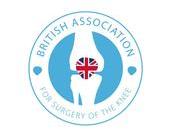BOASt - Investigation and Management of Prosthetic Joint Infection in Knee Replacement


Date Published: August 2020
Last Updated: August 2020
Background and justification
Prosthetic joint infection (PJI) is one of the most challenging clinical problems in Orthopaedics. It is devastating for patients, expensive to treat and achieving good outcomes is difficult. Optimising outcomes for these patients requires well- coordinated, multi-disciplinary team (MDT) care and robust referral pathways to specialist infection treatment centres.
Inclusion:
All patients with a knee replacement (partial or total) with suspected or confirmed PJI.
Summary of Audit Standards
ORGANISATIONAL:
- A robust, well-defined pathway, coordinated by an MDT, should be in place for the timely investigation and management of patients with suspected PJI.
- All cases of suspected and confirmed PJI should be discussed in an infection MDT.
- The MDT should comprise a core of orthopaedic surgeons, infectious disease physicians or microbiologists, specialist nurses, a MDT coordinator and have administrative support. Access to pharmacists, plastic surgeons, rehabilitation teams and allied specialties should be available, either locally or through a regional network.
- All MDT discussions should be standardised and recorded. Outcomes should be audited.
- Red flags suggesting acute infection (e.g. severe acute pain, systemic illness) require emergency clinical review by the on call team.
- Suspected chronic PJI requires outpatient review within 4 weeks and timely investigations. If confirmed PJI the patient needs urgent referral to the MDT coordinator for discussion at the next available meeting.
- All health care professionals involved in this clinical pathway should engage in dedicated continued medical education.
DIAGNOSIS:
- Diagnosis should be made using standardised criteria (ICM 2013 definition1).
- All patients with suspected PJI require CRP serological analysis (+/- ESR or PV). Abnormal results should prompt aspiration +/- biopsy to confirm the diagnosis and identify the sensitivities of any organism cultured.
- Aspiration or biopsy should be performed in a clean environment such as an operating theatre, or interventional radiology suite using an aseptic technique. Aspirated fluid should be placed in sterile pots, and when possible, also inoculated into blood culture bottles to improve culture yield. There should be a locally agreed protocol to obtain a synovial fluid leucocyte count and neutrophil differential. Additional synovial markers of infection such as leucocyte esterase may be useful in some cases.
- Plain imaging (X-Rays) are required in all cases. A bone scan is not routinely recommended, however newer nuclear imaging techniques with a strong negative predictive value may be useful in cases of diagnostic uncertainty.
- Antibiotics should not be administered for 2 weeks prior to aspiration +/- biopsy except in cases of acute infection in a systemically unwell (septic) patient.
- During biopsy procedures, five separate surgical specimens are required to be taken with clean instruments for each sample. Samples require urgent microbiological processing for analysis and should undergo extended culture protocols. Histology is recommended with a quantitative assessment of neutrophil infiltrates.
- In culture negative infection samples that are highly suspicious for PJI the MDT may consider additional fungal or mycobacterial cultures and/or molecular testing. Repeat samples should be taken before assuming there is no infection.
TREATMENT:
- Arthroscopic washout and debridement has no place in the definitive treatment of PJI and should only be performed as a temporising / life-saving measure to reduce the septic load and allow patient optimisation prior to a formal DAIR or revision procedure.
- Debridement Antibiotics and Implant Retention (DAIR) is indicated for acute infections in a well-fixed, well-functioning implant. It is contra-indicated in the presence of a sinus, loose implant and infections caused by fungal, multi-drug resistant or atypical organisms, and caution is recommended in immunocompromised patients or those with multiple comorbidities.
- DAIR should be performed by an experienced arthroplasty surgeon and modular implants must be exchanged if possible.
- Single stage revision is suitable when positive pre-operative culture and antibiotic sensitivity has been obtained or if not suitable for a two stage approach or as determined by the MDT taking into account specific patient factors.
- In cases of previous failed single stage, fungal, atypical or multi-drug resistant infection, or when there are negative pre- operative cultures, two-stage revision is recommended.
- Antibiotic choice and treatment duration should be determined by the MDT, ID specialists or microbiologists guided by local, regional and host factors. The antibiotic plan should be discussed with the patient, including potential adverse effects and the need for any monitoring.
- Tertiary referral is indicated in all complex cases, including all previous failed revisions for PJI. A complexity grading tool, such as the Revision Knee Complexity Classification system, may be used to help determine which cases to refer directly2.
- Every unit managing PJI must submit data to national databases (NJR, BAJIR) to monitor performance against national benchmarks and standards.
Evidence Base:
- Parvizi J, Gehrke T, Chen AF. Proceedings of the International Consensus on Periprosthetic Joint Infection. Bone Joint J 2013;95-B-11:1450-2.
- Phillips JRA, Al-Mouazzen L, Morgan-Jones R, Murray JR, Porteous AJ, Toms AD. Revision knee complexity classification—RKCC: a common-sense guide for surgeons to support regional clinical networking in revision knee surgery. Knee Surg Sports Traumatol Arthrosc. Springer Berlin Heidelberg; 2019 Mar 8;27(4):1011–7.
